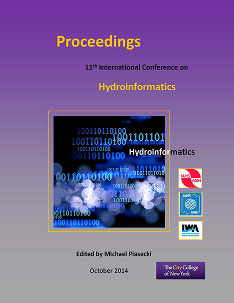Document Type
Presentation
Publication Date
8-1-2014
Abstract
In recent years, impervious areas are increasing in residential zone as well as unsettled area with rapid urbanization and land use. Consequently, this phenomenon influences weak urban environmental compositions about climate change including urban flooding accidents. Therefore, a new paradigm on rainwater management is needed for sound and sustainable restoration of hydrological circulation. Recently, a novel rainwater management system has been developed and recommended for irrigation and flood control in Korea. Especially, P city is now planning a new rainwater management system adopting LID (Low Impact Development) techniques on a small scale development area. In this study, XP-SWMM was used to simulate effects on runoff characteristics by installation of 8 kinds of rainwater management facilities on small scale development area (4.2 ha) of P city in Korea. Also, flood control safety analysis under the condition of localized torrential downpour event was carried out and effects of rainwater recycling facility was evaluated to measure annual water resource amount and water cost reduction. Peak rate runoff was reduced 11.8% and 36.4% in restrict A and B, respectively. Total amount of annual water source substitution was estimated 3,000㎡/yr with LID adoption in land use planning. Acknowledgement : This research was supported by a grant (12-TI-C01) from Advanced Water Management Research Program funded by Ministry of Land , Infrastructure, and Transport of Korean government.



Comments
Session R75, Hydrologic Modeling and Aspects of Decentralization